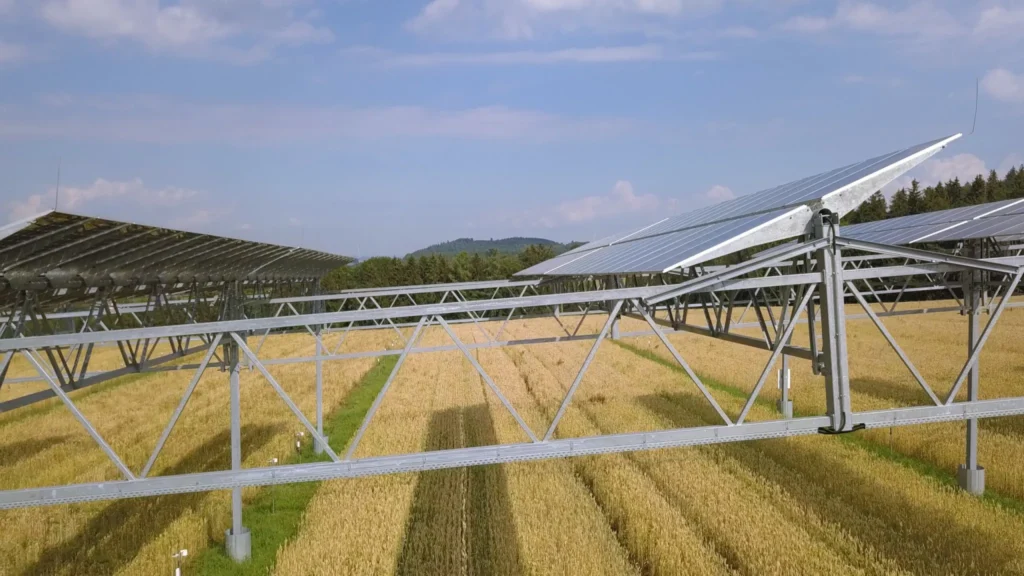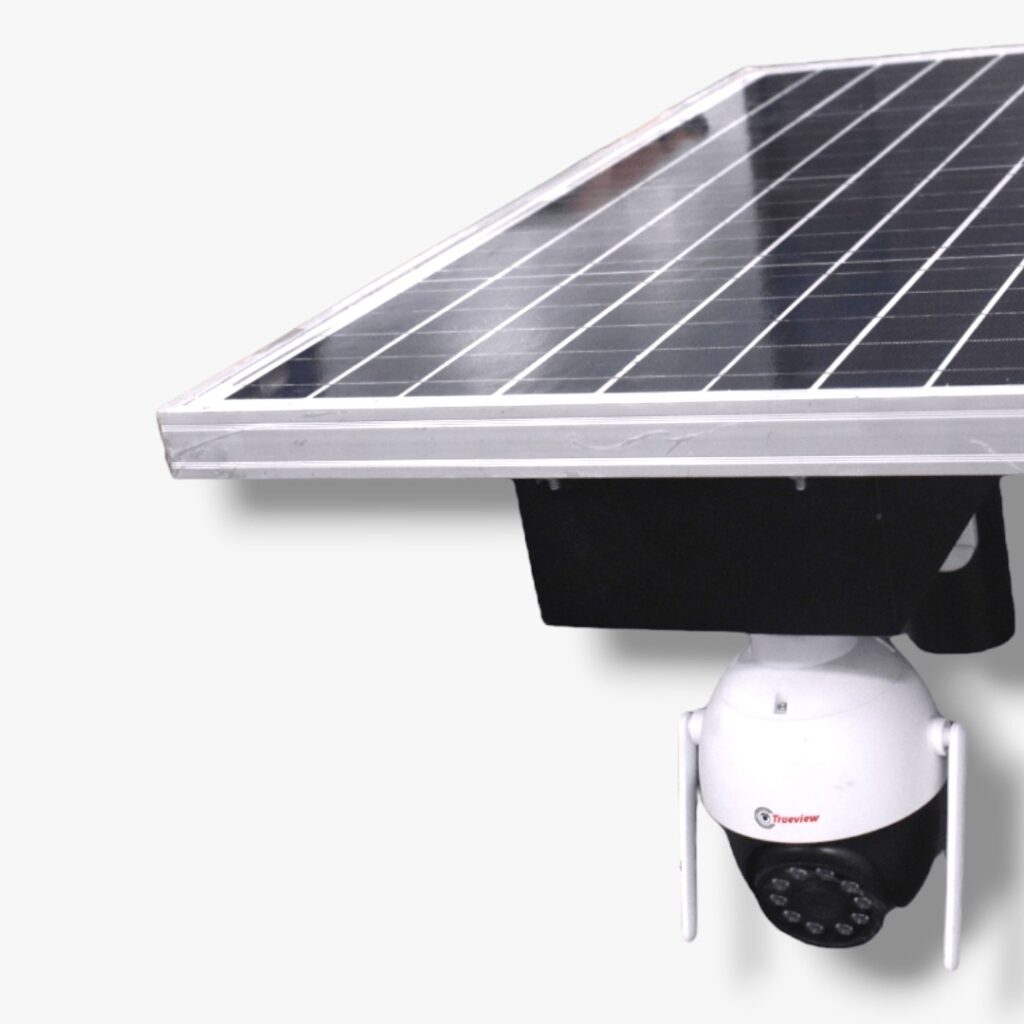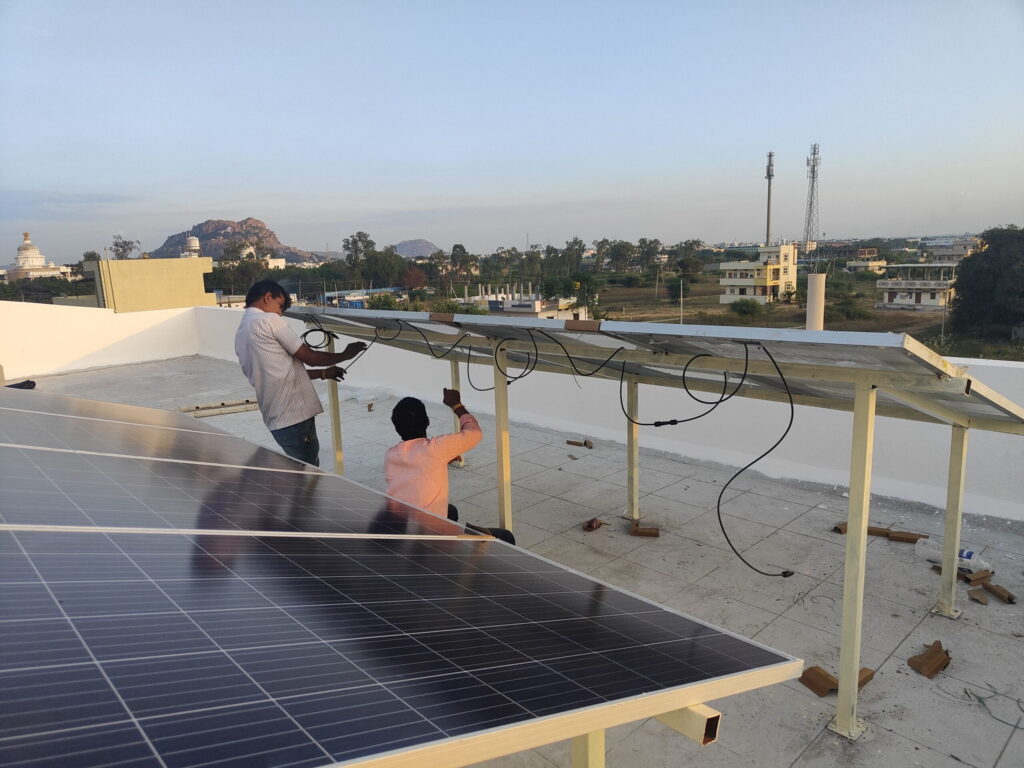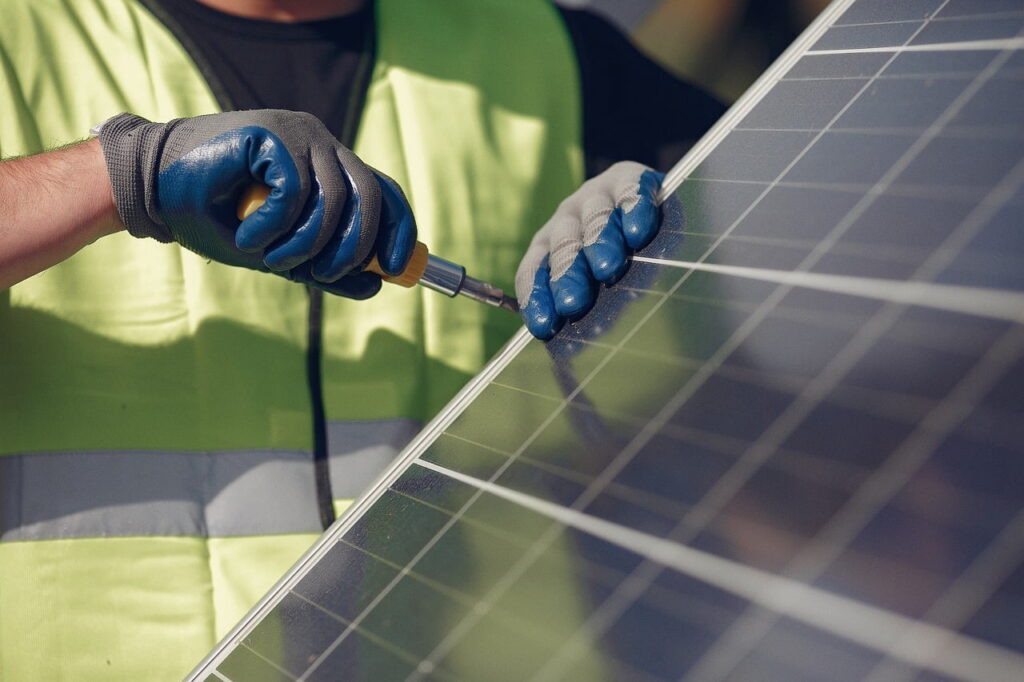How does a PV system work?
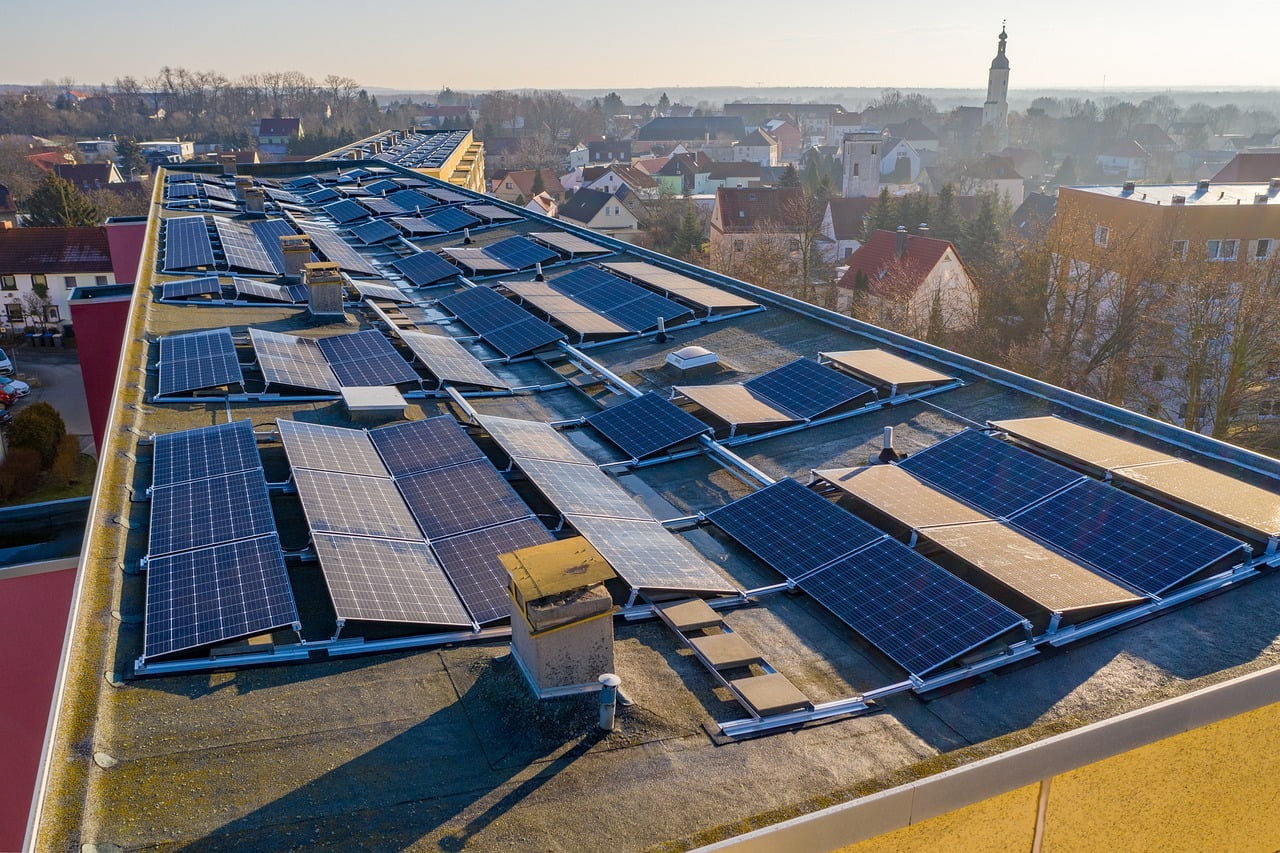
The basic component of every photovoltaic system is the solar cell. In most cases the solar photovoltaic cell is made of silicon, a semiconductor that is also used for diodes, transistors and computer chips. With the introduction of foreign atoms (doping) a p-n junction is generated in the cell that “installs” an electrical field in the crystal. When the light reaches the solar photovoltaic cell then charge carriers are dissolved out of the crystal bindings and moved by the electrical field to the outer contacts. The result at the contacts of the solar cells is the creation of a voltage of approximately 0.5 V. This is called photovoltaic effect. In order to achieve a usable voltage in the region of 20 – 50 V, many cells are switched together in series in a solar module. Besides this, the solar photovoltaic cells in the modules are mechanically protected and sealed against environmental influences.
To make a solar generator, firstly a string of many modules connected in series is composed.This string can again be parallel-connected to further strings. Protect diodes are incorporated into panels to prevent cells with low resistance shunt leakage from getting very hot during periods of partial shading, while string diodes are mounted to prevent reverse current in case of a short circuit. This scheme has the advantages that it can be sized without limits and, in case of fault of a PV module, the damage does not compromise the operation of the entire system.
In many parts of the PV plant (end of a string, inverters and other point of transformation of the current) switchboards are installed with the function of protecting and isolating the various parts of the PV plant. They can be used also to disconnect some sections or to switch off the entire system.
Systems needs the inverter to convert the DC from the solar modules to AC. The solar inverter converts the direct current delivered by the modules into alternating current and feeds it into the public grid. The number of modules determines the total DC watts capable of being generated by the system, although the inverter determines the amount of AC watts that can be consumed. A feed meter measures the generated solar electricity in order to collect payment for the photovoltaic energy generated. The user meter counts the current consumption of the household separately.
This guarantees that the fed-in electric energy is paid for by the energy supply company for 20 years at a guaranteed price. To a certain extent, the owner of the plant becomes a power system operator.
When the system is not connected to the grid is called off-grid. The generated power is stored in a battery. A charge controller may be used to avoid battery damage by excessive charging or discharging.
For the owner of a solar power system the power of his plant is of interest and so is the module is measured according to the Standard-Test-Conditions
(STC) and defined by three limiting conditions:
- Full Sun radiation (radiation strength E = ESTC = 1000 W/m2)
- Temperature of the solar module: JModule = 25 °C
- Standard light spectrum AM 1.5
The capacity of the solar module under these conditions is the rated power of the module. It is given in Watt-Peak (Wp) as it actually describes the peak power of the module under optimal conditions. The efficiency of silicon solar modules is in the range of 13–20%. Besides silicon there are also other materials such as cadmium telluride or copper-indium-selenide, which go under the name of thin film technologies. These reach module efficiencies of 7–13%.

